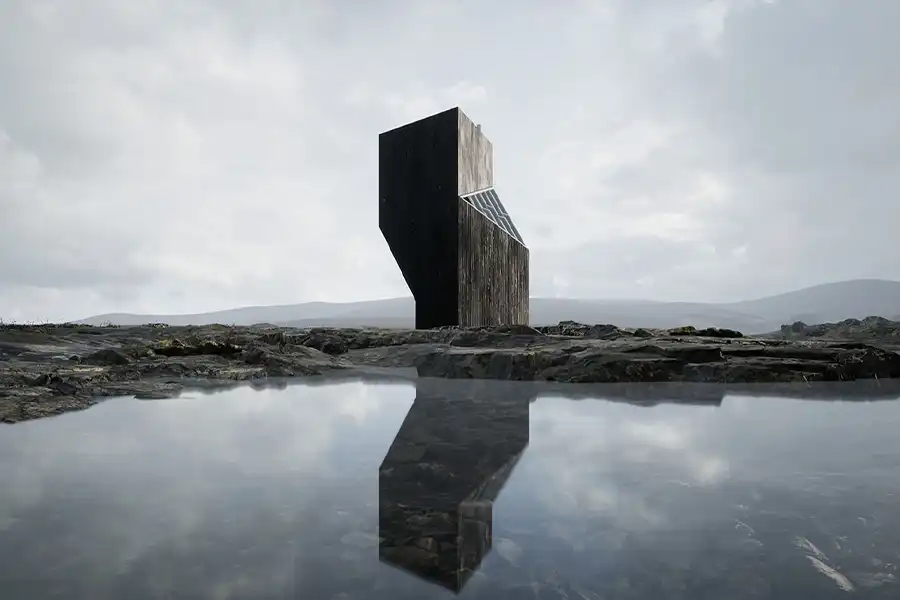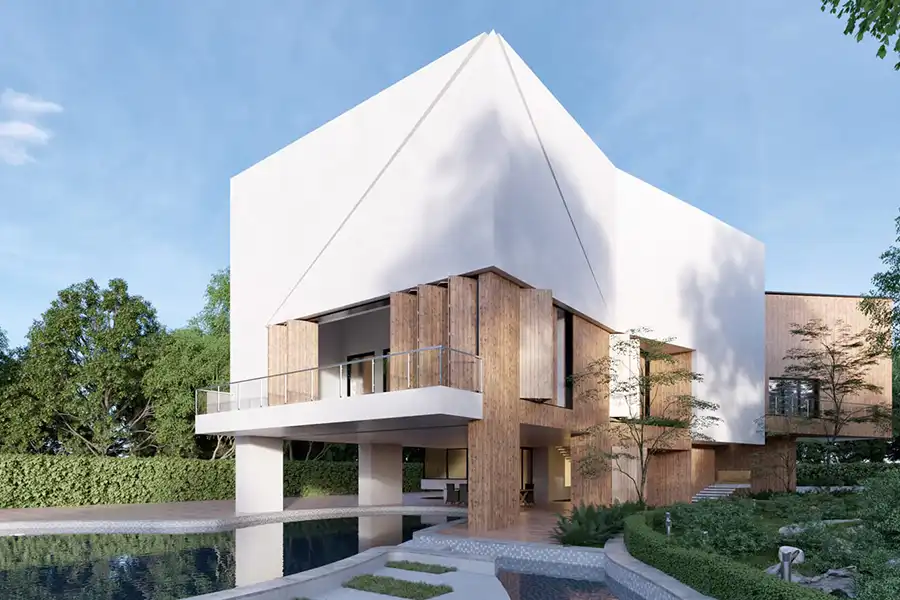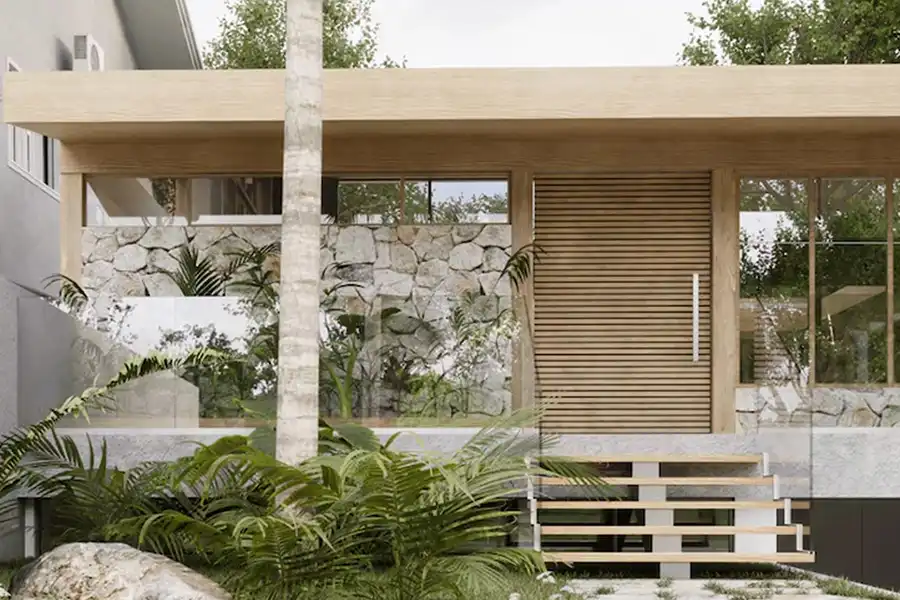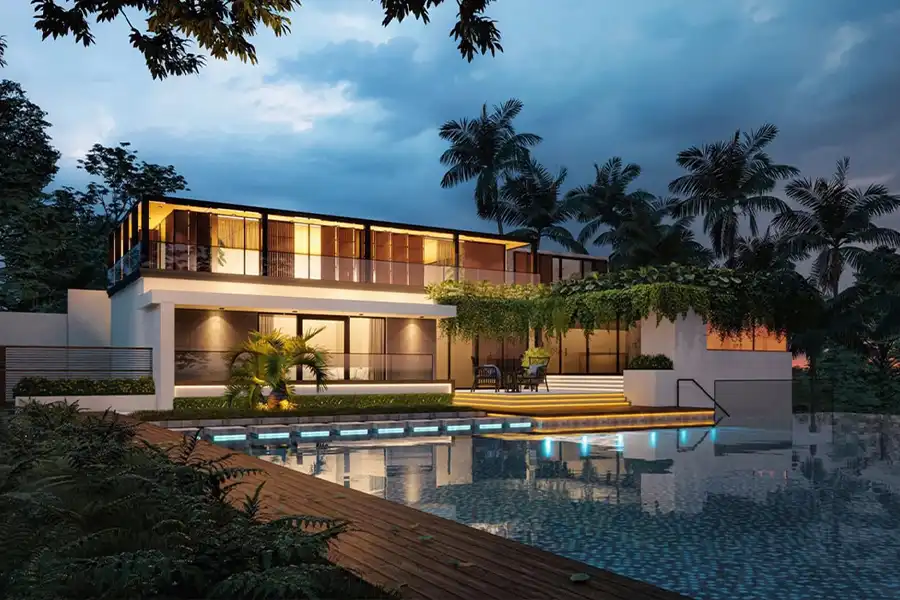
In today’s architecture industry, where visual communication plays a critical role in the design process, 3D rendering has become an indispensable tool for turning ideas into immersive conceptual and photorealistic visuals.
3D Rendering in architecture is the process of producing photorealistic, conceptual images or other visual styles and representations from a 3D digital architecture model. After translating 2D plans into 3D models, 3D rendering engines elevate the visual representations of the 3D models to a new level, a level of simulating a visually engaging scene, materials, and context inside the digital sphere.
These advantages help architects and designers to communicate in a more detailed manner, improving the decision-making process. There are different types of visual representations, including conceptual, photorealistic, and real-time renderings. Each has its own unique benefit for shedding light on specific aspects of the design; in that way, 3D rendering workflows are not just a visualization tool; they capture significance within the design process itself.

With the advancement of design technologies and the growing demand for high-quality architectural visuals, architects now have access to a variety of powerful 3D rendering tools. Here are the top-rated rendering tools in 2025 to help you find the perfect fit.
Lumion is one of the most widely used 3D rendering tools in the architectural design sphere, known for its speed, user-friendly interface, and real-time feedback. Lumion can quickly turn 3D models into immersive visuals with lighting, landscaping, and environment.
Pros: Fast rendering, large material and asset library, and easy integration with 3D modeling tools.
Cons: Limited control over advanced custom settings.
Best for: Quick, fast architectural renderings and client presentations.

V-Ray is a professional rendering engine, known for producing ultra-realistic architectural renderings. It is widely used in high-end visualization, showcasing fine control of lighting accuracy and material precision.
Pros: Stunning realism, advanced customization, plugin integrations with most 3D modeling software.
Cons: steep learning curve, slower render times without powerful hardware.
Best for: Photorealistic visuals, showcasing complex visual details.

Powered by Unreal Engine, Twinmotion offers architects and designers a dynamic rendering experience focused on interactive environments and animated scenes, capturing high visualization quality.
Pros: Fast performance, easy to use, and effective for animation and landscape scenes.
Cons: Limited in free assets, less visual customization.
Best for: Urban design, landscaping, and real-time architectural visualization.

D5 Render is an emerging favorite in the architectural visualization world, blending the speed of real-time rendering with high-end visual output. D5 is a free-to-use software that also integrates AI renderings as part of its workflows.
Pros: Real-time visualization, impressive lighting and material qualities, AI-driven scene optimization and fine-tuning.
Cons: Slightly smaller community than longer-established tools.
Best for: Real-time architectural renderings, and photorealistic visualization.

Enscape is an outstanding engine for architects and designers seeking real-time rendering with VR integration. It includes a direct plugin for 3D modeling tools, featuring a fast workflow framework that allows for instant visualization and changeable design iterations within the modeling environment.
Pros: Real-time rendering, VR implementation, user-friendly interface.
Cons: Less customization than professional render engines.
Best for: Real-time design iterations, virtual reality experience.

Blender is a free, open-source 3D modeling software that also includes powerful Cycles and Eevee rendering engines. While it is not explicitly designed for architecture, it is ideal for custom visualizations.
Pros: Completely free, high customization ability, supports both real-time and ray-traced renderings.
Cons: Steep learning curve, limited architecture-related elements and features without add-ons.
Best for: Budget-conscious designers, creative visualization, and advanced users seeking full control over the tools and parameters.

Unreal Engine is a powerful real-time rendering engine widely used in both the gaming and architectural industries. With advanced lighting, cinematic-quality visuals, and the capability to have full control over the environment, Unreal Engine is ideal for creating high-end interactive architectural visualization.
Unreal Engine offers deeper customization and scripting options for architects and designers seeking advanced control options, but it would require time to learn. Ready to learn Unreal Engine? Check out the PAACADEMY course “The Unreal Engine Blueprint” which aims to build a foundational understanding of Unreal Engine’s Blueprint system, also check out the upcoming PAACADEMY workshop “Blueprints in Motion: From Maya to Unreal Engine”.
Pros: Professional visual realism, real-time interactivity, advanced tool features, extensive asset ecosystem.
Cons: Requires dedication to learn; not beginner-friendly.
Best for: Large-scale interactive visualizations, cinematic architectural views, and custom scenery presentations.

Corona Renderer, developed by Chaos, is a powerful CPU-based photorealistic rendering engine; it’s especially popular for interior architectural visualization purposes. It offers stunning realism with a more artist-friendly approach; it integrates seamlessly with 3ds Max and captures excellent lighting quality.
Pros: Exceptional lighting realism, user-friendly interface, smooth integration with 3ds Max.
Cons: Limited real-time qualities, primarily optimized for interiors.
Best for: High-quality interior renders, and architectural visualization.

Artificial intelligence is rapidly reshaping the visualization industry. Its growing role in rendering workflows helps architects and designers automate repetitive tasks, enhance image quality, and explore a broad range of visual outputs faster than ever.
Some platforms, such as LookX and mnml.ai offer significant AI-powered rendering workflows specifically tailored for architectural visualization purposes. As architectural rendering technologies continue to evolve, the integration of AI will empower architects to push the boundaries of visual communication of designs with further innovative approaches.
You must be logged in to comment.